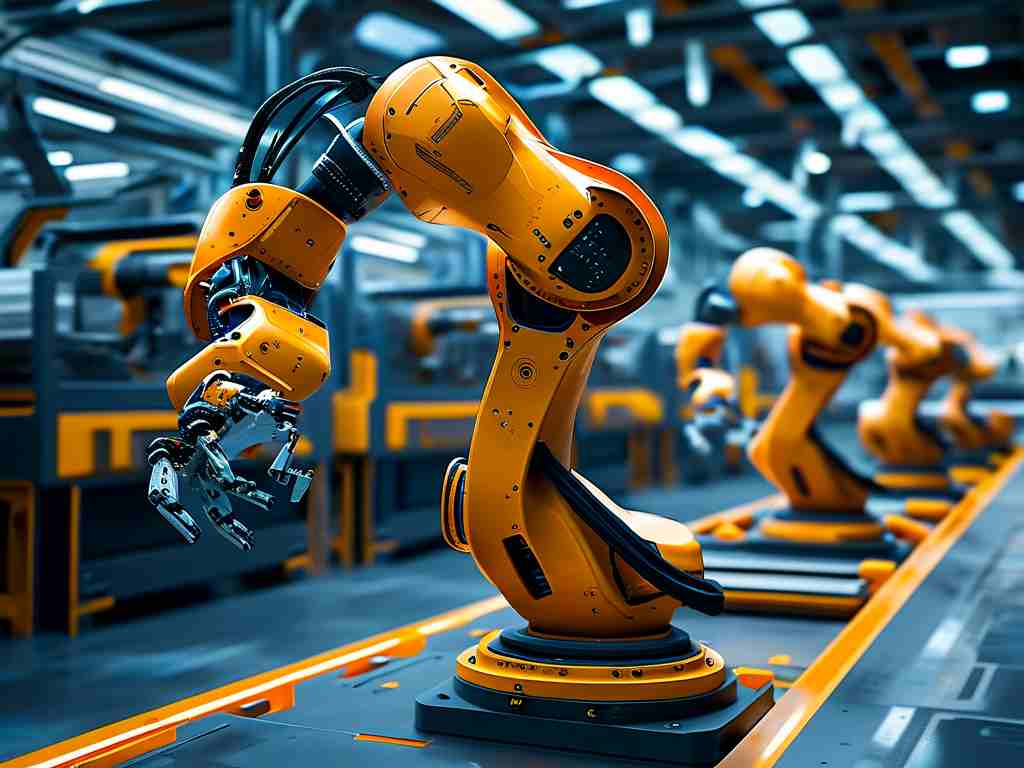The evolution of parallel robotic systems has revolutionized precision manufacturing, particularly in applications requiring complex spatial trajectories. Unlike traditional serial manipulators, parallel mechanisms with multiple kinematic chains offer enhanced rigidity and accuracy – advantages that become particularly critical when executing intricate motion paths.

At the core of this technology lies trajectory planning optimization, a process demanding meticulous mathematical modeling. Engineers employ inverse kinematics algorithms to convert desired end-effector positions into joint space coordinates across multiple limbs. For six-degree-of-freedom platforms like Stewart-Gough manipulators, this involves solving nonlinear equations in real-time while maintaining singularity-free operations.
Recent advancements integrate dynamic compensation models to address inertial forces during high-speed operations. By implementing predictive control algorithms, modern systems can adjust actuator forces 2,000 times per second, effectively counteracting vibration patterns that previously limited maximum operational speeds. This breakthrough enables parallel robots to achieve 0.002mm positioning repeatability while moving at 8m/s velocities – specifications unattainable with conventional industrial robots.
Practical implementations demonstrate remarkable versatility. In aerospace component polishing, parallel robots execute helical trajectories with adaptive force control, automatically adjusting grinding pressure based on real-time surface topology feedback. Automotive welding cells utilize synchronized multi-platform configurations where six parallel arms collaboratively trace complex seam paths on vehicle bodies, reducing cycle times by 40% compared to legacy systems.
The medical field presents unique trajectory challenges addressed through hybrid parallel-serial architectures. Surgical robots like the Synaptive Modus V employ parallel wrist mechanisms to generate tremor-free circular paths during neurosurgical procedures. These systems combine impedance control with optical path tracking to maintain sub-millimeter accuracy despite biological tissue deformation.
Energy efficiency represents an emerging focus area. Researchers at ETH Zurich recently demonstrated a cable-driven parallel robot that optimizes energy consumption by dynamically recomputing motion paths based on payload distribution. Their adaptive algorithm reduced power usage by 27% during standardized pick-and-place tests while maintaining cycle time constraints.
Challenges persist in handling completely unstructured environments. While current systems excel at predefined trajectories, true autonomous path generation requires integrating machine vision with predictive collision avoidance. A 2023 study published in IEEE Transactions on Robotics detailed a framework where parallel robots use depth-sensing cameras to dynamically replan motion paths around unexpected obstacles, achieving 98.6% success rate in randomized obstruction tests.
Future developments point toward quantum-leap improvements through heterogeneous computing architectures. By offloading trajectory computation tasks to dedicated FPGA boards, next-generation controllers can achieve microsecond-level response times. This hardware-software co-design approach enables real-time path optimization considering multiple constraints simultaneously – from energy consumption to thermal management of actuators.
Industry 4.0 integration further amplifies these capabilities. When parallel robotic cells connect via industrial IoT networks, they can share trajectory data across production lines. This allows for collective learning where path optimization insights from one machine improve the performance of entire robotic fleets. BMW's Leipzig plant reported 15% throughput increase after implementing such a federated learning system across 87 parallel robotic workstations.
As collaborative robotics expands, safe trajectory planning becomes paramount. New ISO/TS 15066-compliant systems incorporate redundant LiDAR arrays and torque sensors to detect human proximity. When operators enter predefined zones, the robots automatically transition to reduced-speed motion paths while maintaining operational continuity – a capability demonstrated effectively in Airbus' human-robot aircraft assembly teams.
The convergence of parallel robotics with digital twin technology offers unprecedented simulation capabilities. Engineers can now test millions of virtual trajectory variations using physics-based digital replicas before implementing optimal paths on physical machines. Lockheed Martin reduced satellite component alignment time by 60% using this approach during James Webb Space Telescope mirror segment production.
From microelectronic assembly to large-scale civil engineering, optimized trajectory planning in parallel robotic systems continues to push industrial automation boundaries. As computational power grows and algorithms become more sophisticated, these systems will increasingly handle tasks requiring human-level dexterity and adaptability – ultimately redefining what's possible in automated manufacturing and beyond.

